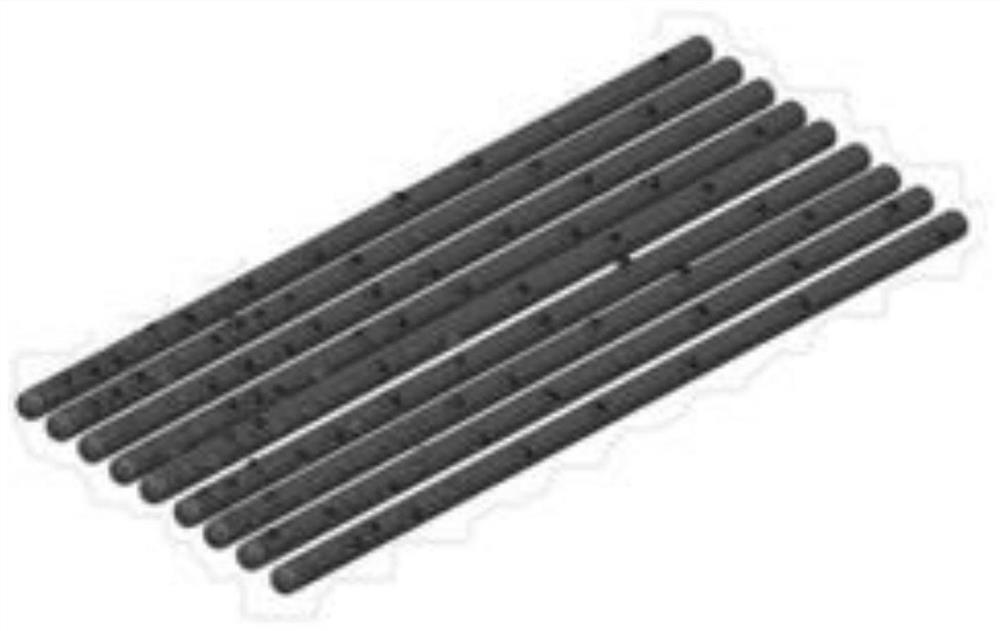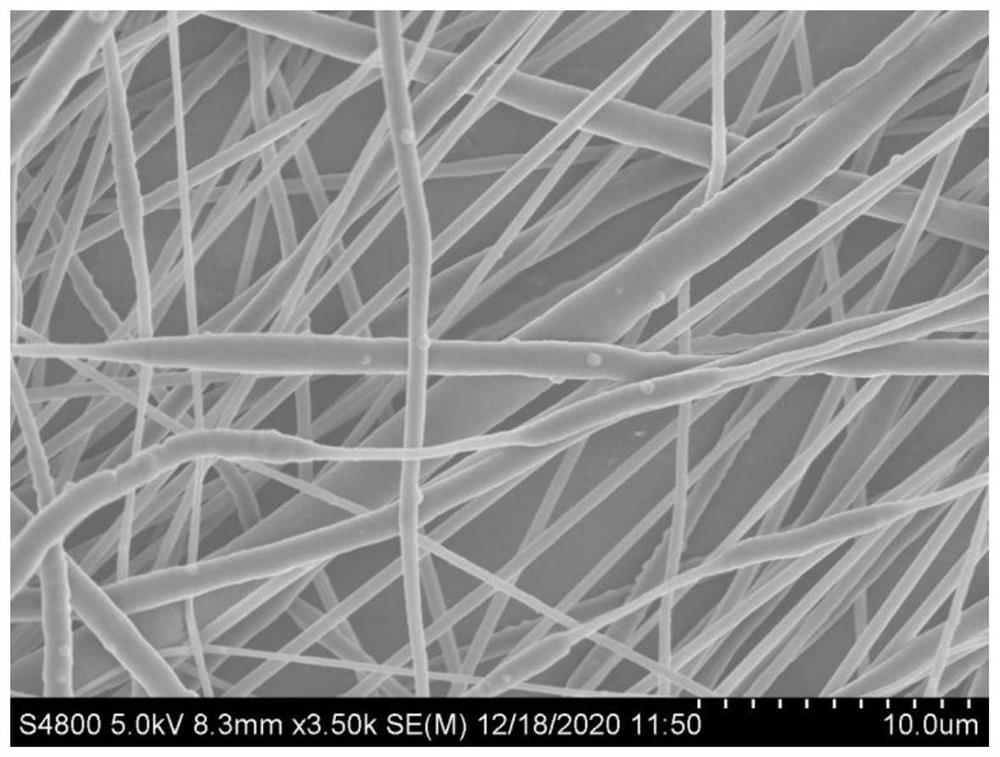Nerve conduit loaded with gradient density particles and preparation method
A nerve conduit and gradient density technology, applied in prosthesis, single-component polyester artificial filament, medical science, etc., can solve the problems of low biological activity and slow repair speed of peripheral nerve damage
- Summary
- Abstract
- Description
- Claims
- Application Information
AI Technical Summary
Problems solved by technology
Method used
Image
Examples
Embodiment 1
[0063] Step (1). Dissolve polycaprolactone in dichloromethane, stir magnetically at room temperature for 24h, to obtain solution D with a mass concentration of 15%;
[0064] Step (2). Electrospinning with solution D, using a roller with a rotating speed of 1000 rpm as a receiver, solution D advancing rate of 8.0 mL / h, voltage of 19 kV, receiving distance of 18 cm, spinning for 1000 min, to obtain uniaxial orientation The polycaprolactone nanofiber membrane;
[0065] Step (3). Dissolve laminin and fibronectin in an aqueous acetic acid solution, stir magnetically at room temperature for 24 hours, and mix thoroughly to obtain a shell solution E with a concentration of 15 mg / mL; take vascular endothelial growth factor and add it to deionized water, Fully stirring and dissolving to obtain the core layer solution F, the concentration is 10ug / mL, the dosage ratio of the polycaprolactone fiber membrane to the sum of the shell layer solution and the core-shell solution is: 1g:40mL; the...
Embodiment 2
[0069] Step (1). Dissolve polylactic acid in trifluoroethanol, and stir magnetically at room temperature for 20h to obtain solution D with a mass concentration of 5%;
[0070] Step (2). Electrospinning with solution D, using a roller with a rotational speed of 2000rpm as a receiver, solution D advancing rate of 5.0mL / h, voltage of 16kV, receiving distance of 13cm, spinning for 1000min, to obtain uniaxial orientation PLA nanofiber membrane;
[0071] Step (3). Dissolve laminin in trifluoroethanol, stir with magnetic force at room temperature for 24 hours, and mix thoroughly to obtain shell solution E with a concentration of 35 mg / mL; take vascular endothelial growth factor and nerve growth factor and add them to deionized In water, fully stir and dissolve to obtain core layer solution F, the concentration is 50ug / mL, the dosage ratio of polylactic acid fiber membrane to the sum of shell layer solution and core-shell solution is: 1g:30mL; the dosage ratio of shell layer solution ...
Embodiment 3
[0075] Step (1). Dissolve polylactic acid-glycolic acid copolymer in chloroform and N,N'-dimethylformamide, and stir magnetically at room temperature for 8h to obtain solution D with a mass concentration of 8%;
[0076] Step (2). Electrospinning with solution D, using a roller with a rotating speed of 1500 rpm as a receiver, solution D advancing rate of 4.0 mL / h, voltage of 26 kV, receiving distance of 28 cm, spinning for 840 min, to obtain uniaxial orientation The polylactic acid-glycolic acid copolymer nanofiber membrane;
[0077] Step (3). Dissolve laminin in a sterile aqueous solution, and mix thoroughly with magnetic stirring at room temperature for 24 hours to obtain shell solution E with a concentration of 30 mg / mL; take brain-derived nerve growth factor, human acidic fibroblast growth The factor is added into deionized water, and the core layer solution F is obtained by stirring and dissolving sufficiently. The dosage ratio of shell solution and core solution is 4:1; ...
PUM
| Property | Measurement | Unit |
|---|---|---|
| concentration | aaaaa | aaaaa |
| diameter | aaaaa | aaaaa |
Abstract
Description
Claims
Application Information
 Login to View More
Login to View More - R&D
- Intellectual Property
- Life Sciences
- Materials
- Tech Scout
- Unparalleled Data Quality
- Higher Quality Content
- 60% Fewer Hallucinations
Browse by: Latest US Patents, China's latest patents, Technical Efficacy Thesaurus, Application Domain, Technology Topic, Popular Technical Reports.
© 2025 PatSnap. All rights reserved.Legal|Privacy policy|Modern Slavery Act Transparency Statement|Sitemap|About US| Contact US: help@patsnap.com


